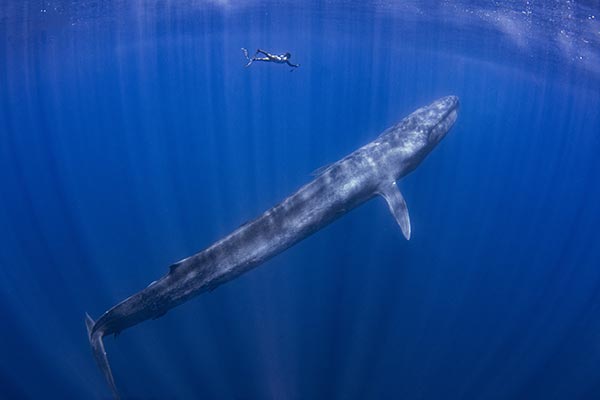
It might resemble a scene from Avatar 2, but scientists now assert that engaging in a conversation with a whale is not just a fantasy. This revelation follows a 20-minute dialogue with a 38-year-old humpback whale named Twain in southeastern Alaska.
Researchers from the SETI Institute and the University of California, Davis (UC Davis) orchestrated this unprecedented encounter by playing a pre-recorded "contact call" to which Twain responded. The significance of this event lies in it being the inaugural communication between humans and whales conducted in the whales' language, as declared by the research team. (Related: Whales and dolphins engage in social talk just like humans, and much more.)
Looking ahead, these groundbreaking interactions may potentially lay the groundwork for future conversations with extraterrestrial beings.
In their study, SETI and UC Davis researchers delved into understanding how whales communicate, aiming to develop "intelligence filters" for the quest to discover alien life. The scientists utilized underwater speakers to broadcast a "whup/throp," a type of greeting call. As the call resonated through the water, Twain approached the boat and reciprocated with her greeting call.
Crucially, the researchers observed that Twain adjusted the frequency of her calls in response to the broadcast, indicating a form of interactive conversation with the recorded call.
Animal behavior expert Brenda McCowan of UC Davis, the lead author of the study, noted that this mirroring behavior signifies the first communicative exchange between humans and humpback whales in their unique "language."
While the researchers propose that Twain's motivation to reply may be rooted in excitement and possible agitation, they also highlight that such "behavioral synchrony" is associated with bonding and group cohesion. This suggests that Twain actively participated in a communicative exchange.
The ultimate objective of the researchers extends beyond conversing with whales; they seek to understand even more peculiar forms of life. Much like how scientists study Antarctica as a proxy for Mars, SETI researchers consider Earth as a source of insights into extraterrestrial intelligence.
Learning to communicate with intelligent animals could help humans communicate with aliens
In the absence of direct contact with aliens, whales serve as valuable proxies due to their exceptional intelligence and communication abilities.
The researchers aim to decipher information within whale calls, with the hope that this knowledge will one day help make sense of potential communications from extraterrestrial beings.
Dr. Laurence Doyle of the SETI Institute notes that the assumption guiding the search for extraterrestrial intelligence is that aliens would be interested in making contact and targeting human receivers – a premise supported by the behavior of humpback whales.
Previously, SETI focused on detecting extraterrestrial life through radio signals, hypothesizing that advanced alien civilizations might use high-energy pulses to communicate.
However, given the uncertainty about how aliens communicate, SETI concentrates on developing tools to scan for signals of intelligence amid the constant background noise of space.
Despite the limited scope of the human-whale interaction, the study sheds light on the potential complexity of whale communication, according to Judith Denkinger, a professor of marine ecology at the Universidad San Francisco de Quito in Ecuador. While extensive research has been conducted on whale songs, the focus on social, non-song calls is relatively scarce, as explained by Denkinger, who was not involved in the research.
"This marks a notable advancement in understanding the social communication of baleen whales," she remarked, referring to the broader category of toothless whales that includes humpbacks.
The research, which captured a single encounter with one whale, was constrained to altering the timing of intervals between recorded calls
Future playback studies of this nature may incorporate various types of calls or introduce more extensive modifications to the calls. Additionally, researchers could explore non-vocal methods of communication.
The team has another study under review, examining how the "bubble rings" created by whales to corral fish might function as a non-vocal means of communication with humans.
Read more stories like this at Breakthrough.news.
Watch this video as KC Sunbeam discusses whether humans are alone in the universe and the theological and philosophical implications of extraterrestrial life.
This video is from the KC Sunbeam channel on Brighteon.com.
More related stories:
North Atlantic right whales “whisper” to protect young calves from predators.
Latest study that uses AI discovers 8 probable alien “technosignatures” near distant stars.
NASA scientist is “absolutely certain” there is ALIEN LIFE in the universe.
Sources include:
Please contact us for more information.



















